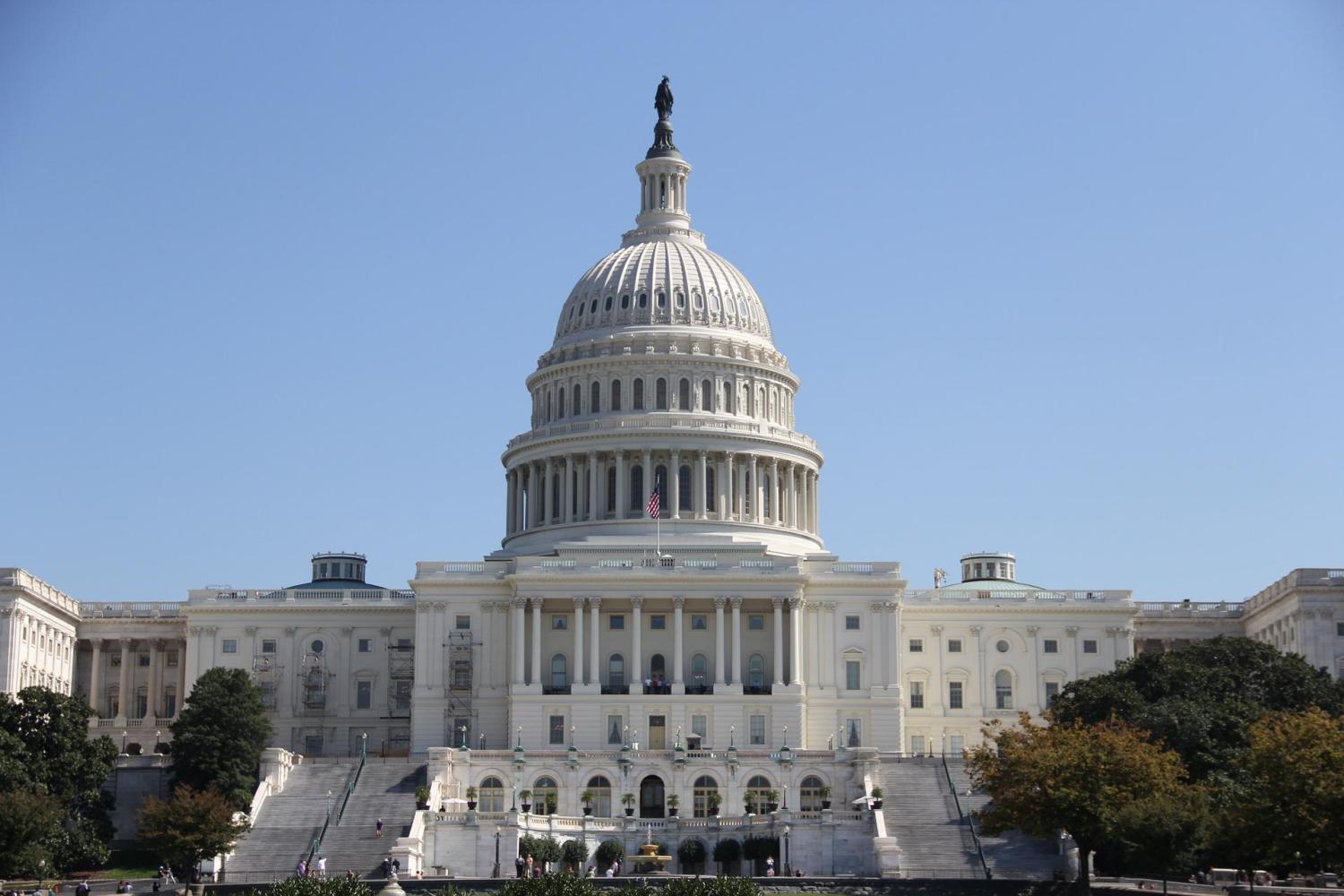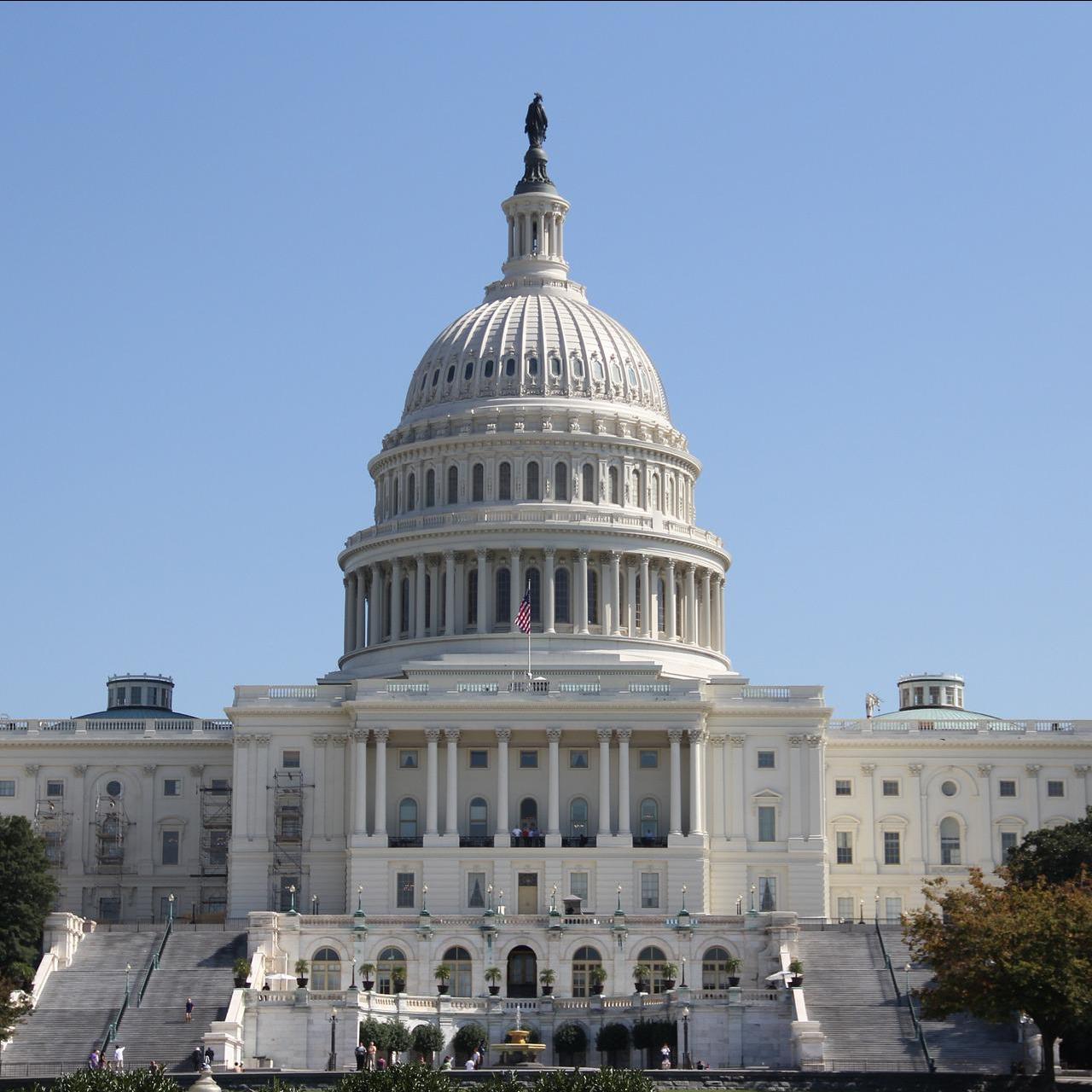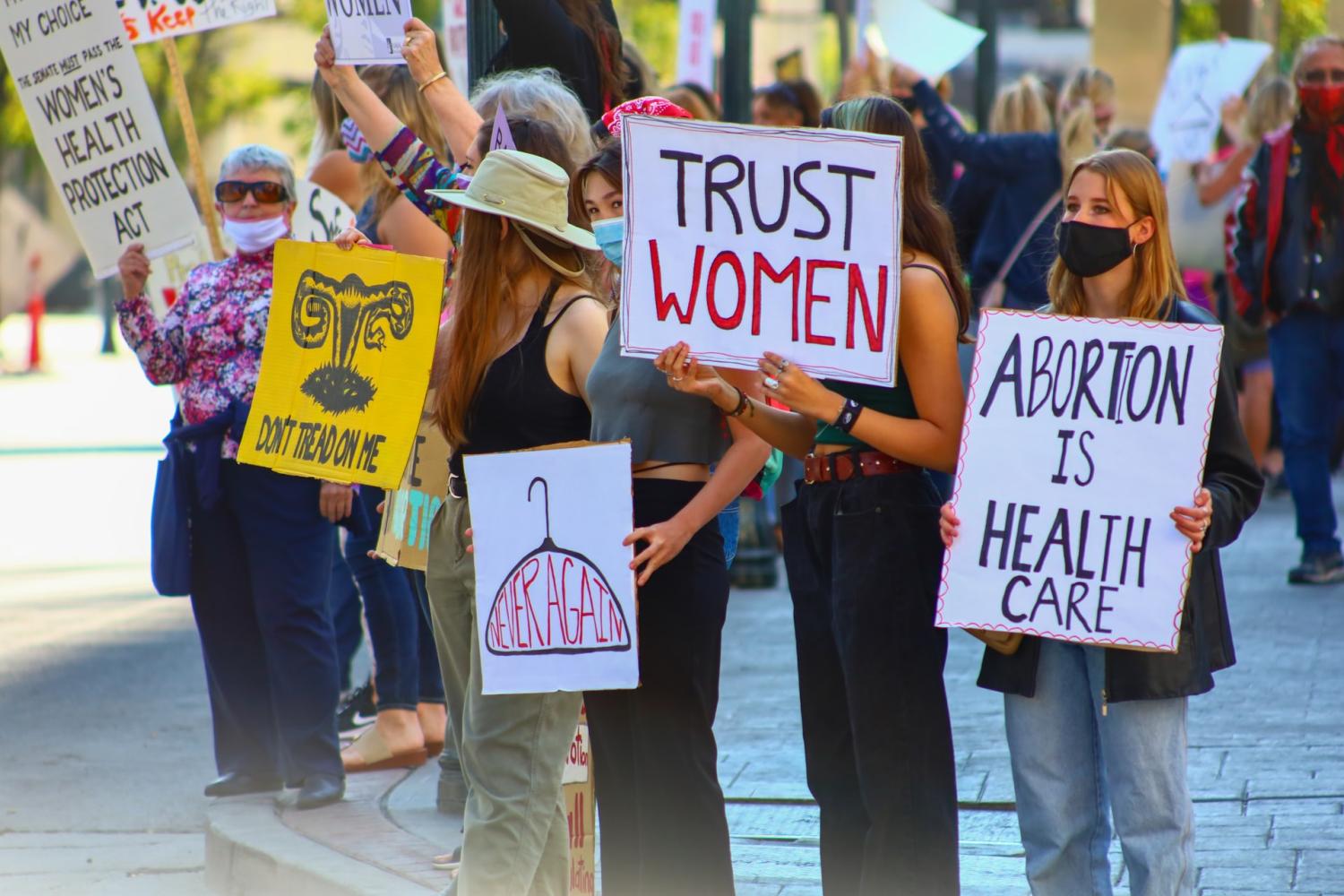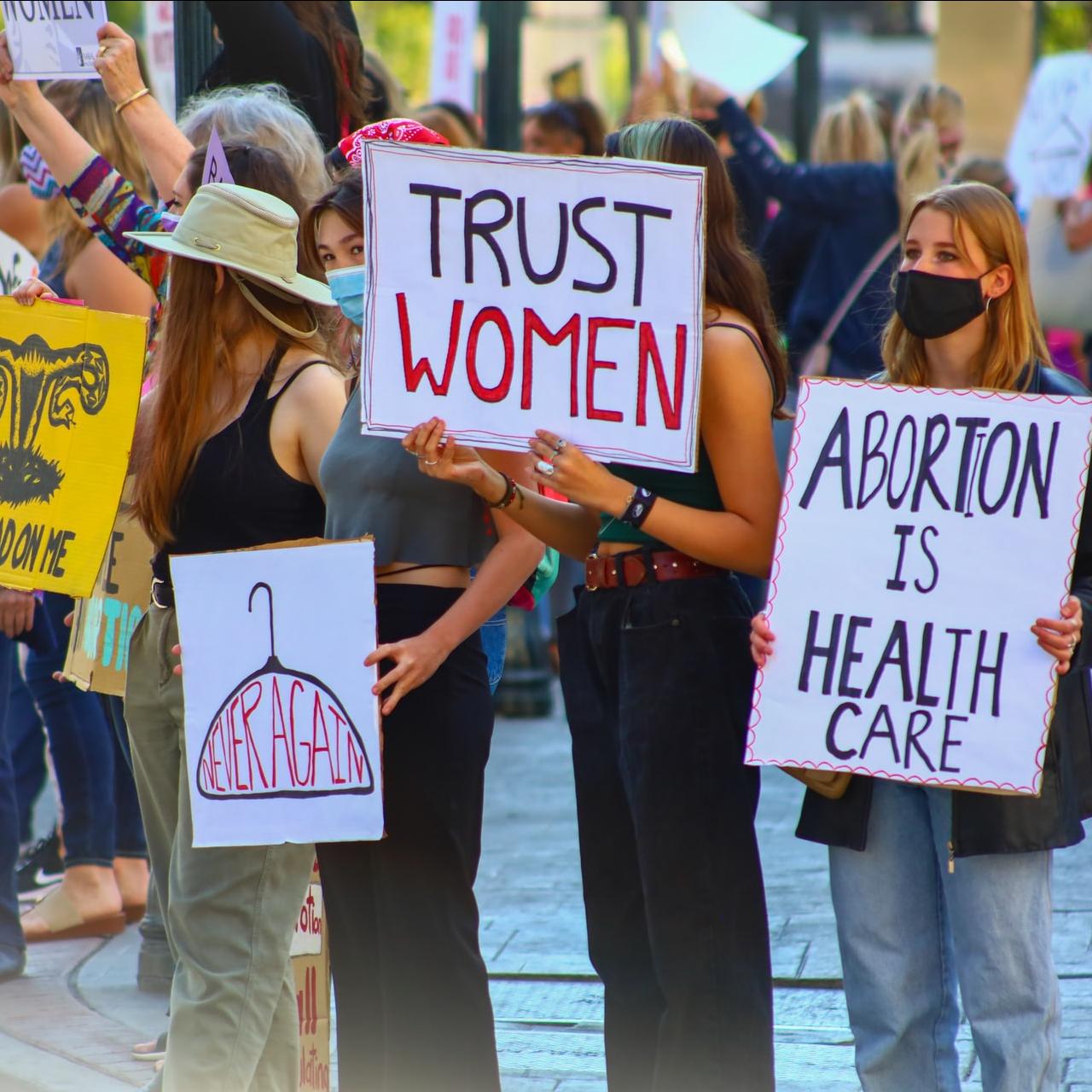HBCU Students Hone Their Engineering Skills with Hands-On Experiences at HanesBrands’ Facilities
Not many college students can say they saved a major multinational company time, money and space. A partnership between the engineering department at North Carolina Agricultural & Technical State University (North Carolina A&T) and HanesBrands (HBI) is allowing senior industrial engineering majors to do just that by solving real-world organizational and time management problems for the clothing giant.
While any partnership between corporations and educational institutions has benefits, the ones that provide mentorships and hands-on experience are often the most coveted. “The company has to choose on what level it wants to be involved,” said Stephen J. Oneyear, an associate professor in the historically Black college’s school of engineering, who oversees the collaboration. “The biggest payback is when they dedicate time. Some partnerships are more time-involved than money-involved. The closer they can get to the students, the more likely they are to find students who fit their mold. It takes a while for companies to get involved on campus and recruit. Then there should be job offers.”
This year the partnership involved two different projects in two HBI facilities. Executives from the Winston-Salem, N.C.-based apparel company outlined the problems, drew up the standards and listed the improvements they needed. Student teams went to work, meeting with HBI personnel weekly.
“Our main goal is to share the experience of working together and develop students’ knowledge through practical, applicable projects,” explained Javier Chacon, SVP of global manufacturing operations at HBI, parent company to brands like Hanes and Champion.
Business support for HBCUs can drive the STEM pipeline of the future
Industry leaders and educators agree there needs to be more efforts to expand science, technology, engineering and math (STEM) education and job training in Black communities that have been historically underserved. The U.S. has about 100 historically Black colleges and universities, or HBCUs, which turn out nearly a quarter of all the STEM degrees earned by Black students.
In particular, job-ready experience is critical for students at HBCUs like North Carolina A&T, as the college graduates the highest number of Black engineers in the country. Many students come from lower-income families and often lack mentors.
Given the scope and impact of HBCUs, corporations can make a difference by engaging with and supporting these institutions. Among the best ways to do that is through internships — especially paid ones — that offer practical experience and lead to full-time positions.
HanesBrands takes a holistic approach in its partnerships with HBCUs, ensuring that funding is one part of an overall package that includes access to mentors, hands-on experience, scholarships and internships. North Carolina A&T engineering students are introduced to different jobs in the company’s distribution centers. They also work with HBI managers, engineers and supervisors to learn how they accomplish everyday operational tasks.
“Typically, students are challenged to use their imagination and creativity, as well as their technical knowledge and skills, to help improve current operational processes,” Chacon said. “Among the skills that students practice are process control and improvement, project management, work area and layout design, and methods engineering.
Students often tell their HBI mentors that having the opportunity to visit and work in the facilities was the most valuable. “We believe that this hands-on learning situation is a win-win for students and HanesBrands, as we both gain from the experience,” Chacon said.
North Carolina A&T students put their creativity to the test in the real world
The semester-long assignments at the center of the partnership allow students to apply what they learned in the classrooms and prepare for their careers, Oneyear said. “We’re trying this so when they go out into the world, they can be successful,” he noted. “They start to see why we’re teaching what we’ve been teaching.” Students take a one-semester course before the program starts so they know what to expect, and many of the students have also had summer jobs in the industry. “They have to apply their knowledge.” Oneyear explained.
The goal of most assignments was to get more done faster and with less effort. Students first analyzed the existing process HBI uses to accomplish a given task, then tested ways to improve it. “We touched on safety, time studies and plant layout,” Oneyear said, “with the overall goal to establish a standard.”
For example, eight students, assigned to two teams, worked with an HBI distribution center in North Carolina and were assigned to develop a better system for a shipping and loading area and create new procedures for the product "picking" process. In one case, students devised a way to free up three more dock doors, speeding up the time to load trucks.
“Four students were involved with each project — and the aim was not only to teach engineering, but teamwork as well,” Oneyear said.
“These are lifelong skills that will be with them for their entire careers,” Chacon added. “Our seasoned engineers spend time teaching, coaching and mentoring different groups of students while they are in our facilities. Students spend some time learning the different ways we do things in our company and then they are able to go out on the floor and put that into practice.”
A broader push to support STEM education at HBCUs
The legacy brand also announced in January 2021 a $2 million investment in three HBCUs. Besides North Carolina A&T, HBI is working with Pensole Lewis College of Business & Design and Winston-Salem State University by providing scholarships, internships, mentorships and research grants. The college programs are part of the company’s broader aim to improve the lives of at least 10 million people by 2030.
The overall goal of these partnerships is to ensure that students acquire the skills, technologies and experience necessary to succeed and to further build a diverse and inclusive STEM pipeline. “As we send the graduates into the workforce, we want them to be very successful,” Oneyear concluded.
This article series is sponsored by HanesBrands and produced by the TriplePundit editorial team.
Image courtesy of North Carolina Agricultural & Technical State University
Want to Revive Sustainable Tourism? Film and Stream More LGBTQ Romance Series, 'Thai BL' Style


Many of us are still swooning over Heartstopper, three-plus months after Netflix released it this past spring. However, many in the LGBTQ community are now also furious that Netflix announced last week it is canceling the supernatural drama First Kill after only one season. Could it be because it centers around an interracial lesbian love story? We’ll never know, and —pardon the pun — we’ll never get a straight answer from Netflix. So, while LGBTQ content keeps improving, there still appears to be an unwritten rule that the main characters need to be light-skinned, wear a white dress shirt and tie, and attend an elite prep school or university. To that end, that’s where Thai BL (often referred to as “Y series” as well) waltzes in, literally — and it’s not a just a thing, it’s a phenomenon.
What are so many of us cray over Thai BL?
Thai BL — i.e., boy love — is a genre of entertainment that has been the biggest hit across much of Asia since Korean dramas. And, sorry Heartstopper fans, but the boy-meets-boy story sans dystopian drama has been around for a while: Thai BL's popularity has been increasing for almost a decade, in fact. Like Heartstopper, this genre’s roots are in print and web comics dating as far back as subtexts in 1970s Japanese manga (specifically, yaoi).
For years, Thai BL stories were largely underground; until the early years of this century, such content was actually imported from Japan rather than produced domestically. Then the series 2gether snowballed in popularity during the early months of the global pandemic, and virtual tours of the various locations where the series was shot soon followed after.
One cannot typecast Thai BL stories as simply homoeroticism or gay love stories. Just as the case with Heartstopper’s creator, Alice Osman, many of these boy love stories are authored by women — though in the case of these love stories, many of these women authors are actually writing for women. Think of them as same-sex romance stories, often with ridiculously hilarious plot twists and far too many awkward moments. Yet women are often an afterthought in Thai BL series, as on many occasions the female characters in these series are often distracted and are clueless about their gay peers as they are frequently obsessed with watching BL stories on their iPads. As the editor and writer Cameron Scheetz of Queerty sums up:
“The guys are cute, the stories are sweet and breezy, the music is upbeat, and they’re largely optimistic, free of anything too traumatic (seriously, it’s almost as if homophobia doesn’t exist in a great many of these shows). At a time when the general state of things *motions wildly* feels grim, it’s not hard to understand why people are gravitating towards BL shows.”
Not 100 percent authentic, but Thai BL series are still a welcome break
To be clear, Thai BL isn’t exactly a true representation of the LGBTQ experience in Thailand. The country’s LGBTQ rights record is mixed: not outright terribly oppressive, but the general public’s attitudes — as well as the laws on the books — evoke mere tolerance, not complete equality and acceptance, and gay marriage is almost, but not yet, legal. Further, we’ve still got the problem of most BL characters being fair-skinned and enrolled in elite schools. Nevertheless, at a time when many LGBTQ people feel like it’s the 1980s all over again with the response to the monkeypox outbreak, Thai BL series can offer an escape and respite, because let’s face it: Many in the LGBTQ community appreciate seeing queer people portrayed as protagonists instead of punchlines.
For LGBTQ fans of Thai BL, the way in which these series is delivered offers indulgence with a side of discretion. Among the streaming services, Japanese-owned Line TV has exploded in popularity with its platform, which many fans choose to watch on their phones. The result, explained the Guardian's Rebecca Ratcliffe, is that these series don’t compete with conventional soap operas on Thailand’s television networks while largely going unnoticed by the more conservative elements of society within Thailand and other countries.
In addition, Thai BL is doing more than challenging the entertainment industry. It could inspire a new genre of travel as well.
Book yourself that Thai BL tour, folks
About Thai BL tourism: It’s already happening, and not just virtual tours like the ones focused on locations seen in 2gether. Take the epic 2020 series, I Told Sunset About You, along with its follow-up drama, I Promised You the Moon. Count in one small business that’s already cashing in: a café in Phuket that sees one particular table booked solid far in advance, as it’s where the two leads in both series often sat and experienced their romance bloom. “They scream so much that I would like to call an ambulance,” quipped the restaurant’s owner during a recent interview with Ratcliffe of the Guardian.
Judging by the success that two video distributors had after setting up booths at a recent Thailand-themed festival in Osaka, Japan, enthusiasm will keep growing and could help revive the tourism sector in the country which is still lagging due to the lingering effects of the pandemic. Representatives of the country’s tourism ministry were reportedly at the festival as well, passing out pamphlets on Thai BL. Similar exhibitions have been held in Tokyo and other cities across Japan in recent months, as the Japanese tend to be the most devoted fans of Thai BL. But as the genre’s popularity expands, more opportunities to welcome tourists from other nations will emerge as well.
Thailand has long been visited for its beaches in the south and cultural riches in the north, along with a dicey side, as in Patpong, the infamous Bangkok neighborhood. But Thai BL fans who are visiting the country can bring with them a new dynamic, similar to how Iceland and Croatia (Game of Thrones) and Crema, Italy (Call Me By Your Name, before Armie Hammer creeped out and even horrified his fan base) saw new influxes of tourists.
These fans would also engender niche of tourism that would be far more responsible and sustainable. We’re not talking about the types of visitors that would overrun historical ecologically fragile destinations, nor are we discussing backpackers on Khao San Road polishing off cans of Singha beer — after all, these traveling fans have their sights set on the neighborhoods, cafes, restaurants and buildings where the most epic Thai BL series were shot on location. Therein lies a boost for many small businesses, such as the one in Phuket with the popular corner table — travelers always need to eat, rehydrate and, sure, occasionally shop. With close to 20 new Thai BL series produced this year alone, the results could benefit the struggling Thai tourism sector while allowing a more localized form of travel to thrive.
The popularity of LGBTQ-themed shows such as Heartstopper, Young Royals and, yes, Thai BL series shows that there’s a craving for compelling and entertaining content — and the next country full of creative types who can capitalize and produce such content might just witness a wave of visitors who wish to see where further acceptance of their community was filmed.
Image credit: Honey Fangs via Unsplash
Heatwaves Are Perils for Public Transit Users: What Transit Systems and Riders Can Do


Bet you’re feeling this intense heat. So are many of the roughly one in 10 Americans who ride public transportation daily. Climate change poses a real threat to mass transit systems. In 2021, extreme heat damaged Portland’s streetcar wires and deformed Seattle's roadways, triggering suspension of service as so-called “sun kinks” from extreme temperatures can bend tracks and lead to a derailment. Scorching heatwaves this summer have had an impact on transit agencies in central Texas, Oklahoma and even New York City.
Public transportation officials have a duty, of course, to operate transportation systems resilient to changing climate impacts as they also aim for net-zero carbon emission. More transport planners find it essential to collaborate with climate adaptation or resilience teams in their cities to adapt to critical weather events for their riders’ safety.
Increasingly, municipal policymakers and planners are developing and adopting climate-sensitive design for public transit stops and transportation, from buses to trains. Some cities, such as Las Vegas, have raised awareness of the dangers of extreme temperatures to their transit riders. Las Vegas has modified its transit service schedule as part of its “beat the heat” initiative, and others are rerouting buses to reduce wait times and passengers’ exposure to the heat. Making operational adjustments often cost less than building and maintaining new physical infrastructure.
In heat-stricken Austin, Texas, in 2019, two University of Texas researchers studied transit ridership and concluded that tree planting at bus stops can prove more effective than bus shelters because trees mitigate climate change. In Portland, misting systems at public parks and stadium shelters that remain open through the night have been improvised as a method of cooling off during this summer’s extreme heatwaves. Spokane, Wash., public libraries have extended their hours to accommodate people seeking refuge from the heat, and the city doesn’t collect transit fees for passengers using the libraries as cooling centers.
In general, city planners and transit officials can take several initiatives to reduce their transit passengers’ heat stress while waiting for and taking public transportation. One essential: public officials must develop extreme-weather emergency plans and identify and adopt adaptation actions.
More specifically, they can: cool pavements on transit routes and transit station roofs via higher solar reflectance to lower surface temperatures; shade main walking and cycling routes to public transportation; use low-energy ventilation systems on buses and metro trains; paint buses white and tint windows to shade off the sun; install thermometers inside buses and trains for riders to monitor temperatures; set up misting systems in waiting areas (while being conscious of water and energy demands); and install drinking fountains in public spaces.
As for riders, what can they do when taking public transportation during off-the-chart heatwaves? They can stay hydrated, use a handheld fan, choose light and airy clothes, travel when it’s cooler, avoid needless trips, and avoid sugar and salt that can aggravate thirst. When possible, they should avoid the sun and be prepared for delays.
In other words: stay cool.
Image credit: Scott Webb via Pexels
The Social Media Fuss Over Cracker Barrel Shows Why Companies Need to Just Be Authentic and Carry On


In case you missed it, the sky has fallen as the restaurant chain, overnight RV parking scion and rest stop staple Cracker Barrel recently decided to serve the Impossible plant-based sausage patty as an option on its breakfast menu.
The result has been a gift that keeps on giving after the company posted the menu item on Facebook, as the faux outrage began (the following responses were copied verbatim):
“I Use to Love your store Now No Way”
“I can’t believe Cracker Barrel has bought into this ‘fake meat’ junk!”
“Its not about being triggered. When a company like CB buys into the Woke Burgerking Crap, and even calls it "impossible", they have lost all touch with the individuals they are marketing to. I can assure you this will proof to be a bad misstep! There would be nothing wrong with a Vegetarian menu item, but the fact they choose this timing and type of language, is another matter.”
“Read the room and understand your base. It’s not that there are options, it’s that yet another woke company will bite the dust with this one.”
“I just want to know why all these companies feel that they have to follow the leader on all of this crap. Cracker Barrel is a great company and they got great Without Woke Meat. Get the message most people don't want this crap. You are only appealing to a small percentage of people. I still love Cracker Barrel but please stick to your roots.”
The joy of this saga, of course, is in the responses, and something is going on with Meta’s algorithms as the more mocking comments — not necessarily the ones expressing “vegan, yay!” — have filtered their way toward the top of the comments section, including:
“Imagine being angry that a restaurant is adding an item to their menu for non meat eaters.”
“Holy sheet. Lmao y'all act like the Cracker Barrel staff is gonna come out and cram impossible sausage down your throat. Honestly, for some of y'all, I'd buy a ticket to that event.”
“I go there to eat peanuts off the floor pretty soon they'll replace them with vegan peanuts what is the world coming too...”
“Such is the toxicity of our time: Menu options are now perceived political slights. What a world.”
“Imagine being triggered that people will have an alternative that’s not a mf salad. Cracker Barrel should add mushroom gravy to their menu too!”
“I often wonder if Mark Zuckerburg envisioned that his little project to rate girls on the internet would turn into a forum for thousands of old people to yell at Cracker Barrel for adding a menu item they didn't want. Absolutely wild.”
“Next time I'm at a Cracker Barrel, I'm ordering everyone in the restaurant one side of Impossible Sausage (no substitutions) then I'm going to sit back, enjoy my coffee, and watch the tantrums ensue.”
The angst toward Cracker Barrel hasn’t abated quite yet, as a post earlier today about its stuffed cheesecake pancakes with a side of curbed delivery pickup provoked comments such as “I hope it’s not dairy free.”
The response of Cracker Barrel so far to this spit-spat has been understated yet brilliant. When asked by CBS News about the kerfuffle, a company spokesman replied that it “appreciate[s] the love our fans have for our all-day breakfast menu,” and that the company has a goal “to satisfy every taste bud — whether people want to stick with traditional favorites like bacon and sausage or are hungry for a new, nutritious plant-based option like Impossible Sausage."
Granted, Impossible sausage shouldn’t be remotely as triggering as what has been going on with volatile issues such as immigration, LGBTQ rights and abortion. Nevertheless, the episode involving Cracker Barrel this week shows some timely lessons — overall, it’s all right to take a stand on a social (real or perceived) issue. Those who are upset will most likely stick around; you might score some new customers; and even if politicians take up the mantle and try to gaslight the public by passing legislation that singles your company out, the odds are that the system of checks and balances here in the U.S. still prevails ... at least for now.
Image credit: Cracker Barrel via Facebook
Companies Keep Outsourcing Their Opposition to Climate Change Legislation: One CEO Has Said, 'Enough Already'


Venture onto most companies’ websites, and you’ll see statements about their commitments to taking on climate change. The problem, however, is that the numbers don’t add up — specifically, the number of dollars these companies are diverting toward lobbying efforts to defeat any meaningful climate change legislation. Even more problematic is that many of America’s leading companies are doing this by proxy, as in funding the work of groups like the U.S. Chamber of Commerce and the Business Roundtable.
Now, these lobbying organizations are focused on defeating the latest iteration of the “Build Back Better” bill, titled the Inflation Reduction Act of 2022. The bill, which includes investments for taking on climate climate change along with investments in healthcare, is facing opposition from the U.S. Chamber and Business Roundtable, largely over a proposal to tax companies with more than $1 billion revenue at a rate of 15 percent.
The legislation had been largely tossed aside until Sen. Joe Manchin of West Virginia reached a deal with the U.S. Senate’s leadership. “Tax fairness is vital to our nation’s economic future. It is wrong that some of America’s largest companies pay nothing in taxes while freely enjoying the benefits of our nation’s military security, infrastructure and rule of law,” Manchin said in a public statement late last month. “It is commonsense that a domestic corporate minimum tax of 15 percent be applied only to billion-dollar companies or larger, ensuring that America’s largest businesses are no longer able to operate for free in our economy.”
Meanwhile, the money keeps flowing from groups who oppose the legislation. Accountable.US has estimated that lobbyists have funneled $9 million in corporate money to legislators who are determined to block or defeat any version of Build Back Better. At the same time, Business Roundtable itself has spent more than $9 million this year on lobbying. Political action committees with ties to the U.S. Chamber have so far spend more than $19 million during 2022.
As independent journalist Judd Legum has pointed out, some companies that would benefit from the Inflation Reduction Act, such as GM, have very strong ties to these business groups — GM’s CEO, in fact, is currently the Business Roundtable’s chairperson. Legum has also cited a survey that concluded at least 70 companies with more than $1 billion in revenues have paid less than a 15 percent federal corporate tax rate.
At least one noteable CEO is calling out his peers for their funding of lobbying efforts designed to prevent companies from paying their fair share of taxes, while also urging them to support Build Back Better. In a recent LinkedIn post, Patagonia CEO Ryan Gellert urged the U.S. business community to support the act, concluding with:
“Many companies that belong to these organizations talk a big game on climate — just look at their websites. They should no longer remain silent while the Chamber and Business Roundtable do their dirty work. If you talk about how your company is going to protect the planet, you need to pay your fair share to help scale solutions for things like clean power, transportation and manufacturing. It’s time for the business community to unite in support of the Inflation Reduction Act.”
Image credit: Mikdev va Pixabay
Mental Health Awareness: My Perfectly Imperfect Wellness Journey


By Peter Courtney | Global Wellness/Work-Life Lead
Growing up in one of the most conservative areas of the U.S. was difficult for a brown kid coming to terms with his sexuality. I knew that I was different from a young age; I hid these differences until I was 20 years old.
Before I came out as gay, first to my best friend and then to my parents, I started having panic attacks. One day, I had a terrible episode during a drive with my best friend. I immediately asked him to pull the car over and found myself in the bathroom of a fast-food restaurant, gasping for air. I washed my face, stared into the mirror, and didn’t know who I was nor what I was becoming. My heart was telling me to stop hiding who I was, but my mind wasn’t there yet. I told my parents that I wanted to drop out of college and locked myself in my room that afternoon. Shocked and confused, they asked that I see a doctor about my anxiety and not make any rash decisions until then.
A positive of growing up in a small town is that the doctor that I saw as an adult is the same one who delivered me as a newborn. Knowing my entire medical history for the first two decades of my life, my doctor knew that I wasn’t myself. We talked through the panic attacks and what was happening. He read between the lines and walked me through his recommended next steps for treating my anxiety. I’ll never forget wiping away my tears, listening intently as he talked about the grey clouds parting (clouds that I knew all too well) and reassuring me that I need to be ready to embrace the sunshine and return to the honest, happy person I used to be. I find it ironic yet incredibly comforting that one of the first humans to hold me when I entered this world also guided me to a place where I accepted my perfectly imperfect self.
Steps to improve mental health
Since coming out, I routinely check on my mental health, whether on my own, with my husband, or with the support of a therapist. I’m proud to say that I found my last therapist through our very own Employee Assistance Program. One of my most memorable interactions with my therapist was during the early part of the pandemic. He gave me excellent practices, which I feel still apply to many of our circumstances today.
Make time for you
Whether it’s a minute of meditation or 30 minutes of yoga, it’s important to take the time to recharge and take care of both your physical and emotional self.
Get out and walk
My husband and I don’t take as many walks as we used to (and we no longer call them COVID walks as we did early in the pandemic), but getting fresh air was a lifesaver while living through a pandemic lockdown. Fresh air, experiencing nature, and light exercise can feed your soul. Get out there! Bonus: we met many neighbors during these walks that we might have not otherwise met.
Talk to coworkers
It’s been wonderful seeing photos of our office reopening in different parts of the world and seeing colleagues connect and reconnect. Whether you are in the office full-time, part-time (like me), or fully remote, it’s important to keep this momentum going. Make time for lunches, happy hours, or coffee breaks (whether in person, Zoom, or a hybrid of both).
Plan a trip
You know it’s time for a vacation when you start looking like the unenthused photo on your driving license. Many of us cancelled and postponed milestone celebrations in the past two years. Just the planning of a vacation can ease your worries and free up your mind to dream about a particular destination close to your heart. Some cannot go on a trip, but perhaps working with what is possible – such as a small change in your physical surroundings or routine, doing what makes you happy – could have the same rejuvenating effect.
In practice
It is nice to work for a company that values mental health and offers opportunities to support it. In line with the advice I practice, we offered a Zumba class to employees in partnership with WONDER (Women Outreach & Development Resources) and HOLA (Hispanic/Latino Outreach, Leadership & Advancement) Communities (Employee Resource Groups). We were thrilled with the participation, because it allowed employees an opportunity to step away from their desks and recharge physically as well as mentally.
As a Global Wellness lead, the mental health of our employees is always at the forefront of my mind. Whether using one of the best practices above or another method, be sure to take time out to care for your mental health.
Previously published on NortonLifeLock.com and the 3BL Media newsroom.
Image credit: Total Shape via Unsplash
Why Unilever Is Betting Big on Shorter Coconut Trees

Unilever is hoping that its new breed of miniature coconut trees will lead to big improvements for farmers.
Coconut trees provide many common ingredients in popular consumer products, most notably coconut sugar. However, coconut farming is risky. Coconut trees are tall, typically around 100 feet high, and to collect the nectar needed for coconut sugar production, farmers must climb to the top of the trees with buckets and knives in order to harvest nectar by hand.
In order to improve farmer safety and secure future supply of coconut sugar, Unilever and the Indonesian Coconut Institute are releasing a new breed of coconut trees that only grow to approximately one-third of the height of a typical coconut tree, which should make nectar harvesting a significantly safer activity. This new coconut tree, called the Genjah Kuning Bali, also reaches maturity in four years rather than the typical seven.
Developing and releasing this new tree breed is one of the actions Unilever says it has taken to improve the sustainability of the coconut industry since signing the Sustainable Coconut Charter, an initiative to improve incomes and livelihoods of smallholder farmers, enhance supply chain traceability, prevent deforestation and mitigate the climate crisis.
Short coconut trees: a new approach to boost farmers’ livelihoods
Before the planting season begins, Unilever establishes a list of farmers interested in partnering with Unilever. Then, the company partners with local suppliers and nurseries to distribute coconut seedlings to farmers, free-of-charge. In turn, the farmers commit to applying more responsible agricultural practices to ensure the trees grow well.
Climate change has created new burdens for coconut farmers, so Unilever has partnered with Balit Palma, an institute focused on palm and coconut research in Indonesia, to offer educational services for farmers in good agricultural practices and climate change resilience.
“Unilever also works closely with the farmer community to build a service delivery model, which should help farmers access finance, fertilizers and ensure offtake of their coconut sugar,” explained Clement Jaloux, Unilever’s Procurement Manager, Supplier Development South East Asia. “Taken together, farmers can increase their incomes by farming their plots without needing to clear forests. Keeping trees standing is an important way to slow the progress of climate change.”
Harnessing technology to improve sustainability
Developing new breeds of coconut trees is not the only high-tech agricultural solution Unilever is providing for farmers. The company has also developed a smartphone app to help identify agricultural issues, provide farmers with advice, and forecast coconut sugar output.
The app also helps the company monitor deforestation and environmental degradation using satellite technology. “All farmers and their land involved in the mini coconut trees initiative are registered using digital technology. Once this process is underway, deforestation is monitored via digital platforms, where deforestation alerts are tracked on a monthly basis,” Jaloux explained. He added that the platforms “use geolocation technology to enhance the traceability and transparency of our supply chains.”
“It’s exciting progress; this is technology that just wasn’t available a few years ago,” Jaloux said.
Unilever’s future plans for coconut program growth
The first 100-hectare test plot of Genjah Kuning Bali trees was planted in 2017, and since then, Unilever says it has scaled up production at a rapid pace. As of June 2022, Unilever says it has planted the equivalent of 3,300 hectares with their miniature coconut trees in collaboration with 3,600 smallholder farmers. The number of hectares planted with Genjah Kuning Bali coconuts is expected to grow as farmers replace their older, less-productive trees with the new, smaller variety. Unilever’s timing is critical, as coconut trees in Indonesia are quickly aging out of peak productivity. By 2026, Unilever will aim to source half of its coconut sugar supply from this new variety of tree.
Image credit: Unilever
This Summer Made Americans Get It: Yes, Climate Change is a Thing


The headlines this summer have summed up what many of us have been feeling for the past several weeks: It’s hot as hell and we really don’t want to take it anymore. Even if many Americans still don’t want to acknowledge that climate change is real, many are noticing that something is up in the air, and it isn’t pretty.
The research and insights firm Civic Science has been keeping tabs on Americans’ attitudes about climate change, and the numbers that its staff has been crunching are revealing. For one thing, as with any problem such as climate change, the deal is not what you’re asking, but how you’re asking it.
Take this question, for example: “How concerned are you right now about climate change and the environment?” Five years ago, there was a 56 to 44 split in who was concerned versus not (or hardly) concerned. That 12-point gap isn’t overwhelming, but that’s not a surprise considering what happened in the 2016 presidential election. But by 2020, those who were concerned about climate change outpolled those not concerned by more than a two-to-one margin. But this year, the gap has narrowed by eight points. That decrease shouldn’t be too shocking, as headlines about Ukraine and price hikes are front and center on the minds of much of the U.S. public.
But when asked if people have “noticed different weather” in the past year, those who’ve noticed a difference outpoll those who have noticed little or nothing by a 20-point gap. So, if they aren’t believing it, they’re feeling it — and interestingly enough, folks in the U.S. west by far, Midwest, and southern states (albeit slightly) are more concerned about climate change than Americans living in northeastern U.S. states.
Civic Science’s researchers have also witnessed an uptick in concern about climate change over the past few weeks — par for the course as cities from Austin to Boston have set record high temperatures this summer.
Polling on climate change has been all over the place, though most surveys have revealed more of an age gap in attitudes toward climate change than a political gap. On that point, politicians seemed to have gotten the message, based on the behind-the-scenes urgency that led to Capitol Hill’s progress on the Inflation Reduction Act of 2022, i.e., the latest version of the climate bill.
But it’s time for the business community to get on message, too. The reality is that we’ve been long past hearing about climate goals for 2030, and let’s face it: Net-zero promises for 2040 or 2050 will only open the doors to more mockery and mistrust from the public. Bottom line, your stakeholders, especially younger citizens, want to know what your company is doing now. After all, younger citizens will be the ones who will experiences summers with more days of scorching temperatures as the world lurches toward mid-century without any meaningful climate action plan
Image credit: Kelly Sikkema via Unsplash
Memo to the Boss: a Human-Centered Work Culture with Purpose Pays Off


It comes as no surprise that CEOs who value their employees reap the benefits, including higher productivity, more trustworthy behavior and higher retention. Higher Ambition Leadership Alliance, a non-profit committed to harnessing the power of leadership to create stronger organizations, conducted a study of CEOs to determine how such executives fuel performance. In a time when many employees across the world are becoming more concerned with purpose, inclusivity, authenticity and communication, leaders who take human-centered approaches are making strides across industries.
As the study explained, “Now more than ever the world is looking to business for meaningful and intentional leadership.” To that end, Higher Ambition Leadership says it is determined to help corporate leaders realize the full potential of their company’s people, purpose and performance.
The Alliance believes that this human-centered approach results in trusting relationships with stakeholders, supportive company cultures, outperformance of peers and a positive influence on the world. Shared themes of building trust, honoring people and embracing authenticity were seen among the participating CEOs. Rather than seeking quick results, cutting corners or succumbing to corporate inertia, successful executives believed in long-term benefits that come from adopting more sustainable practices.
The Alliance’s interviews included 50 CEOs who varied in gender, age, tenure and organization size. The research began during widespread COVID-19 shutdowns and continued through early 2022. As they worked to adapt to the business challenges brought on by the pandemic, leaders found success by narrowing their focus: care for people and maintain the business.
Although difficult and nuanced, having a clear purpose resulted in remarkable adaptability and resiliency, says the Higher Ambition Leadership Alliance. Researchers recognize the impacts of climate change, geopolitical shifts, AI, cyber security risks, and future pandemics on supply chain, labor and market volatility. According to the group’s researchers, today’s business challenges require more meaningful actions than, say, a public statement about an initiative or an environmental awareness campaign. On that point, the executives who were included in this study said they have implemented intentional, distinctive and human-centered actions that produce powerful performance and productivity.
The study highlights three ways that “higher ambition” leaders, as the Alliance refers to them, motivate employees:
“Build high-trust relationships with stakeholders to power innovation and agility. Recognize that culture is the high stakes value driver…or destroyer… and invest accordingly. Show up authentic, open, and vulnerable to engage and inspire your team.”
From this research’s perspective, knowing the what is a great first step, but knowing the how provides much more insight. In an interview with the organization’s CEO, Jeannie Diefenderfer, she highlighted for TriplePundit some tangible ways leaders are able to put these practices into action.
Diefenderfer told 3p, “The CEOs we speak with aren’t afraid to show they are fallible… Many of them have also shared powerful personal stories with their teams from childhood or from early in their careers that affected them deeply and have shaped who they are as leaders.”
Further, having personal conversations with employees in both one-on-one and group settings allows CEOs to connect with, care for and better support employees. The study suggested the importance of openness and honesty, admitting when mistakes are made and following through on commitments. In addition, the study concludes that authenticity and reflection are ways of building a united team of employees.
Diefenderfer also discussed the power of purpose. When asked how leaders can get started on a human-centered approach to leadership, she replied, “Naming their own purpose and thinking about how it connects with the mission and purpose of their teams and organization is an important first step.”
One participating CEO from The CEO Study, Tom Polen, mentioned that quality is the purpose of his company. Polen said, “We hold ourselves and our teams accountable for ensuring quality is at the core of everything we do. If we aren’t asking questions and listening, we aren’t learning.”
This focus on product quality helps anchor team forums as they reflect on progress and challenges. He added, “As a result, we’re building a culture where our associates feel comfortable challenging the status quo and speaking up if they see a more efficient process, an innovative approach, or a potential problem that needs to be addressed.”
Intentional leadership requires regularly reflecting upon what matters, what is working and what can be improved. It takes making the effort to ask more questions, to connect with employees about topics besides work and to clarify purpose and values through deep reflection. Grounded in academic research and real-world experience, the Higher Ambition Leadership Alliance’s research could help organizations become more successful with meaningful and long-lasting impacts on business and beyond.
Image credit: Paul Hanaoka via Unsplash
Corporate HR Needs to Prepare As More Abortion Bans are Coming


The full impact of the strict abortion ban movement is rapidly coming into view, and it’s far from the life-honoring picture painted by its “pro-life” advocates. Over and above the human rights implications of a forced-birth regime, states with strict abortion bans have amplified the long-simmering issue of unequal medical treatment based on gender. The bans have set off a time bomb in the human resources departments of corporations all across the U.S., and it is ready to explode.
Abortion bans create a second class of citizens
So-called “pro-life” activists deny that outright cruelty is the underlying principle of strict abortion bans, but the truth is undeniable. In the context of 21st-century medicine, strict abortion bans are the definition of cruelty.
Socioeconomic factors often undercut the ideal of equal access to medical treatment in the U.S. However, for millions of Americans all the sophisticated resources of modern medicine are readily available, on demand, for all sorts of conditions.
As a matter of course, that on-demand access to medical care should include terminating an unwanted or dangerous pregnancy. Pregnancy is a medical condition that carries with it a certain measure of risk, whether or not the pregnancy is desired. In the U.S., hundreds of maternal and post-partum deaths occur every year.
In addition, many pregnancies result in miscarriage, whether or not the pregnancy is desired. Withholding or delaying treatment for an ectopic pregnancy, an unviable fetus or a medically complicated miscarriage can result in risks to the health and safety of the patient, up to and including death.
Editor's note: Be sure to subscribe to our Brands Taking Stands newsletter, which comes out every Wednesday.
Forcing unwanted pregnancies also further traumatizes victims of sexual violence, including victims of domestic violence, and forced birth puts thousands of others at risk of gun violence.
Nevertheless, strict abortion bans are spreading from state to state on the heels of the Dobbs decision. These bans set up a second, inferior class of citizenship for pregnant people, denying them the modern medical resources that could safely terminate a dangerous or unplanned, unwanted pregnancy.
In addition, the bans are straining resources in other states as pregnant people travel in search of treatment, leading to triage and delays in care.
“Pro-life” is weak tea in a nation where appropriate medical attention is so readily available on demand for other conditions, but not pregnancy.
Second-class citizenship for all women, pregnant or not
As much as “pro-life” advocates try to deny that their extremist position intentionally harms women, children, and anyone else capable of carrying a pregnancy, the effects of strict abortion bans have already rippled out far beyond the field of pregnant people, to have an impact on anyone who even looks like they could be pregnant, now or at some future date.
These effects, too, need to be viewed in the context of modern medical practice.
Specifically, strict abortion bans have an impact on drugs that have been approved to induce abortions in the earlier weeks of pregnancy. These same drugs are also used to treat other medical conditions.
As a result, in states with strict abortion ban every female — and anyone who identifies as female — who needs those drugs for other medical conditions must prove, somehow, that the drugs will not be used for an abortion.
In contrast, no male-identified person must face this kind of sex-based interrogation, or deal with the possibility that care will be denied.
Last month, Medical News Today reported that some states have banned abortion-inducing medicines including methotrexate, mifepristone and misoprostol.
Those bans can have a huge impact on pregnant people needing prompt treatment for a complicated miscarriage or ectopic pregnancy. “Pro-life” advocates claim that abortion bans permit such usage, but that is no comfort to health care workers who fear getting caught up in the justice system simply for prescribing a medication.
“… the fear of penalties, including being charged with a felony, has resulted in some pharmacists refusing to dispense these medications for ectopic pregnancies and miscarriages,” writes Medical News Today.
That fear extends to other conditions, too. Medical News Today cites a list of methotrexate-treatable autoimmune conditions including rheumatoid arthritis, scleroderma, and lupus.
“Methotrexate is also used for the treatment of inflammatory bowel disease and a variety of cancers, including breast cancer, lymphoma, leukemia, and lung cancer,” they add.
Since methotrexate can cause birth defects, female patients are advised to double down on their birth control when using the drug for other conditions. However, birth control can fail, and access to birth control is also under threat. Physicians prescribing methotrexate could face liability if an unintended pregnancy occurs during treatment for another condition.
“According to some reports from individuals with autoimmune disorders on social media, rheumatologists have stopped renewing prescriptions for methotrexate,” Medical News Today observes. “Reports from arthritis patients in states with anti-abortion laws have also reported pharmacists refusing to fill prescriptions.”
The cruelty is the point
To raise the cruelty level to the boiling point, some of these non-pregnancy medical conditions disproportionately have effects on females, including breast cancer and arthritis. In addition, some of these conditions, including lupus and inflammatory bowel disease, can flare during pregnancy and threaten the life of the mother.
“My fear is that in this new age of widespread abortion restriction, people who have a uterus and are within reproductive age will suffer from undertreated diseases,” explains Dr. Birru Talabi, a rheumatology professor at the University of Pittsburgh, as cited by Medical News Today.
Another source emphasized that “these abortion laws will further widen the already existent inequity in healthcare as women with autoimmune conditions will be disproportionately impacted compared to men.”
Other state laws that can have an impact on pregnant people can further complicate access to medicines. In Missouri, for example, a pregnant person cannot finalize a divorce during the pregnancy, potentially enabling the estranged partner or other self-appointed community police to interfere with medical decisions during the pregnancy.
The impact of prescription denial also goes beyond the privacy of the doctor’s office, and extends into the local pharmacy. Last week, NBC News4 of Washington, D.C. and the Associated Press reported that CVS Health is requiring pharmacies to verify that their prescriptions will not be used to end a pregnancy.
That may sound mild enough, but it can easily become an aggressive interrogation and result in prescription denial.
The reporters cited Anna Hyde, the head of advocacy and access for the Arthritis Foundation, who explained that “some of the stories we’ve gotten in are of women who are over the age of 50 — they are past their reproductive years — and they’re still being asked really invasive questions and having roadblocks thrown up.”
So far, the CVS verification requirement covers Alabama, Arkansas, Idaho, Oklahoma and Texas. It is all but certain to spread as other states enact strict abortion bans.
As for the impacts on corporate human resources departments, those committed to gender equity in health care — including their own benefits packages — will have to do more than send pregnant employees flying off to other states for abortion care. Many other people, especially, women, are already suffering the consequences of strict abortion bans, and there are many more to come.
Image credit: Manny Becerra via Unsplash